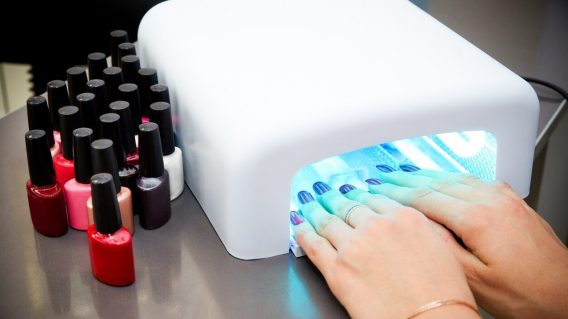UV Nail Dryers May Increase Cancer Risk a New Study Says
Editors carefully fact-check all Consumer Notice, LLC content for accuracy and quality.
Consumer Notice, LLC has a stringent fact-checking process. It starts with our strict sourcing guidelines.
We only gather information from credible sources. This includes peer-reviewed medical journals, reputable media outlets, government reports, court records and interviews with qualified experts.

Regular use of UV nail dryers may increase the risk of skin cancer according to the results of a recent study. The risk applies to people who get gel manicures, which require UV light to cure and dry the polish.
The machines can damage DNA and cause mutations in human cells. These changes could increase the risk of developing skin cancer.
Researchers from the University of California San Diego and the University of Pittsburgh published the results earlier this month in the journal Nature Communications. More research is necessary to understand the potential risk for skin cancer from UV nail dryers.
“It is likely that such studies will take at least a decade to complete and to subsequently inform the general public,” researchers note. Dermatologists can recommend taking precautions in the meantime, such as applying sunscreen or choosing a different type of nail polish.
Study Confirms Dermatologists’ Warnings About UV Nail Lamps
Some dermatologists have warned about the potential health effects of UV nail lamps for several years. Many already recommend sunscreen and fingerless gloves to those getting gel manicures Dr. Shari Lipner, a dermatologist and director of the Nail Division at Weill Cornell Medicine, told NPR.
“I think even before the study, that was the way to go,” Lipner said. “And in light of the study, I think it should convince people even more to use caution.”
Gel manicures last longer than traditional nail polish, but patrons often return to nail salons for professional removal because it requires soaking in acetone. It’s common for customers to get a new gel manicure every few weeks, which leads to recurring UV exposure from these potentially harmful products.
UV Nail Dryers Damage DNA
Medical journals have reported rare cancers on the nails and fingers of frequent gel polish users. But no study has investigated how UV nail dryers may affect human cells until now.
The sun creates ultraviolet radiation, which is categorized into three types: Ultraviolet A, ultraviolet B and ultraviolet C. UV nail lamps use ultraviolet A, which is considered the least dangerous of the three types.
Past research in animals shows that UVA exposure causes mutations in cells that lead to an increase in cancer risk. While the current study shows radiation from UV nail lamps causes genetic mutations and damages DNA and mitochondria, an organelle that creates energy, it does not provide definitive proof of an increased cancer risk.
Researchers must conduct epidemiological studies on a large scale to further understand the potential risks. “Taken together, our experimental results and the prior evidence strongly suggest that radiation emitted by UV-nail polish dryers may cause cancers of the hand,” the study says. “[A]nd that UV-nail polish dryers, similar to tanning beds, may increase the risk of early-onset skin cancer.”